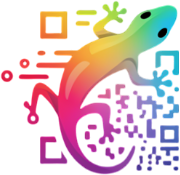What is a Dynamic QR Code? Benefits and Use Cases


What is a Dynamic QR Code?
Dynamic QR codes are an advanced type of QR code that allow you to change the destination URL or content even after the QR code has been generated. Unlike static QR codes, which are fixed and unchangeable, dynamic ones provide greater flexibility and analytical capabilities.
With dynamic QR codes becoming increasingly popular in digital marketing, event management, contactless services, and more, understanding how they work can help businesses and individuals optimize their operations.
How Does a Dynamic QR Code Work?
Dynamic QR codes operate by linking to a short URL that redirects users to the actual content. The actual destination can be changed at any time without altering the printed QR code. When a user scans a dynamic QR code, these steps take place:
- Scan: The QR reader detects the code using a smartphone camera or scanner.
- Redirect: The short link stored in the QR code is triggered.
- Fetch: The system fetches the latest destination linked to the short URL.
- Analytics: Data such as time, location, and device is logged automatically.
💡 Most smartphones today can scan QR codes directly from the camera app, without needing a separate app.
Static vs. Dynamic QR Codes
Static QR Codes
Once created, static QR codes cannot be edited. They are ideal for simple use cases like Wi-Fi passwords, contact info, or fixed URLs where tracking is not necessary.
Dynamic QR Codes
These are more advanced and offer several benefits:
- Editable Content: Change the target URL without reprinting the code.
- Analytics: Track scan statistics, including location, date, and device.
- Short URLs: Clean, user-friendly links behind the scenes.
- Campaign Management: Perfect for A/B testing and promotional tracking.
Where Are Dynamic QR Codes Used?
- Marketing & Advertising: Drive traffic to landing pages, track conversions.
- Hospitality: Share digital menus and contactless order systems.
- Event Management: Use for ticket scanning and live updates.
- Education: Provide access to external learning resources and video content.
- Professional Networking: Share resumes, portfolios, or contact info via business cards.
How to Create a Dynamic QR Code?
1. Using QR Code Platforms
Tools like GeckoQR allow you to generate and manage dynamic QR codes with the following features:
- Support for multiple content types: URLs, text, phone numbers, email, etc.
- Design customization: colors, shapes, frames
- Add your logo or brand image
- Download in high resolution for print
- Track scans and edit content anytime
2. Mobile Applications
Many mobile apps allow on-the-go creation and editing of QR codes—perfect for quick updates and agile campaigns.
Security and Tracking Features
- Scan Monitoring: See when, where, and how many times your code is scanned.
- URL Filtering: Detect malicious or fake links and prevent misuse.
- Access Control: Password protection or scan limits can be applied.
- Device Detection: Know which platforms (iOS, Android, desktop) your audience uses.
The Future of Dynamic QR Codes
As technology evolves, dynamic QR codes are being integrated into cutting-edge systems:
- Mobile payment and contactless transactions
- AR/VR experiences and interactive installations
- Smart cities and IoT-based public information access
Their ability to adapt, track, and evolve makes them a vital tool in the digital transformation landscape.
Conclusion
Dynamic QR codes provide an unmatched combination of flexibility, analytics, and real-time control. Whether you’re running a business, managing events, or enhancing learning experiences, dynamic QR codes are a smart, modern solution to bridge physical and digital worlds.

GeckoQR
Dynamic QR Code Generator